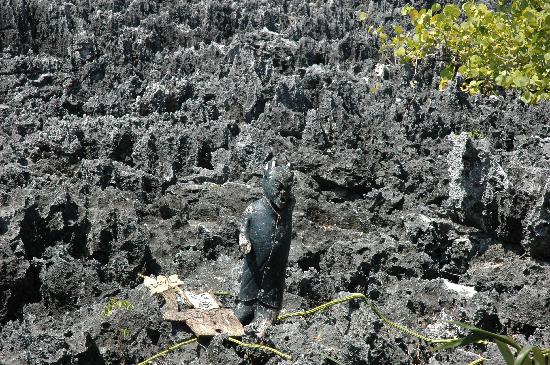About
Site Directory
Copyright © 2025 www.yabsta.ky
All Right Reserved
powered by 
Copyright © 2025 www.yabsta.ky
All Right Reserved
powered by 
Just outside of West Bay, on the North-West tip of Seven Mile Beach, lies the community of Hell. Hell is host to one of the most colorfully-named post offices in the world. Many visitors stop by in order to send a postcard, franked "Hell, Grand Cayman". They have been to Hell. Are you going too?
Hell’s fame, in addition to its great postmark, lies in the rock formations rising out of the ground. Short spikes of eerie-looking black rock look like lava in the aftermath of a volcano. The fascinating Turtle Farm lies just up the road.
How to get to Hell
Catch buses 1 and 2, or take a short car drive up the West coast, along Seven Mile Beach.
A Hell of a name
Hell is one of those places whose origins are shrouded in mystery. Some say a U.S. President exclaimed that it was "hot as Hell" there. Others claim that a commissioner from England, out hunting, missed the bird he was shooting at. "Oh Hell!" he exclaimed.
Some of the stories derive from the rocks. One such is that if a pebble is thrown out among the rocks, it rattles through the ridges and furrows. The sound it makes is as though it’s falling all the way down to Hell. Alternatively, one of the rock formations is said to look like the Devil himself. No wonder the place is named Hell.
The Rocks
Whatever lies behind the name, it’s definitely an appropriate one. The black, threatening rock gives an intimidating impression of what the other Hell may well be like. These jagged rock formations occupy an area around half the size of a soccer field. People are no longer allowed to walk among the rocks, for fear of damage. However, two observation platforms give a fascinating view of this Infernal landscape.
The rock formations are not actually lava, despite their appearance. They are a mixture of limestone and dolomite. The stone has been eroded over the years by algae producing a landform called a phytokarst. The algae attacks the calcium in the limestone, leaving a predominance of the harder dolomite. The resulting shapes are those which can be seen in Hell today. No further erosion will now take place as the algae requires water to stay alive. The rock is actually bright white in color, but has been blackened by the algae, giving rise to its weird appearance.
Tip
Avoid the post office if you don’t wanted to be greeted by phrases such as "where the Hell are you from" and "it’s been a Hell of a day" from someone dressed in all red and looking suspiciously like the Devil.